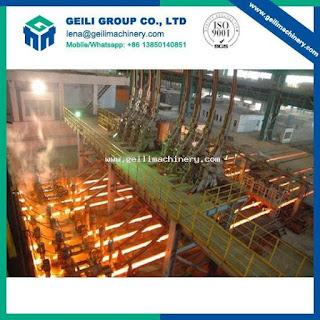Major applications for these steels are in high rise and tall multi-storey buildings, industrial buildings, towers, tunnels, bridges, road barriers and industrial structures etc.
The common shapes in which structural steels are available consist of sections (beams, channels, Tees section and angles), squares and rounds, hexagons, plates, pipes, hollow square sections, steel cable, Z sections and cold formed sections etc.
Structural steels for use at ambient or moderately elevated temperatures are of the following types.
1. Carbon and carbon-manganese steels – In these steels the maximum content for alloying elements does not exceed the following: (i) manganese – 1.65 %, silicon – 0.40 % and (iii) copper – 0.6 %. The specified minimum of copper does not exceed 0.4 % and also there is no minimum content is specified for other elements to obtain a desired alloying effect.
2. High strength low alloy (HSLA) steel
3. Heat treated high tensile steels
4. Constructional alloy steels
5.High performance steels – These steels are with enhanced notch toughness and generally used in construction of bridges.
Fujian Putian Geili Machinery manufacturing Co., Ltd was founded in 2006, the registered capital of 20,000,000 yuan. The company is located in one of the city center onn the west side of the Straits Economic Zone, Xianyou Putian.
As We are not only a manufacturer of steel machinery, but we have our own steel
mill, which can produce deformed bar, angle bar, round steel, wire rod, steel
coil, steel plate etc. If you have inquiry in these area, pls don't hesitate
to contact us.
 |
| Steel profile H Channel |










